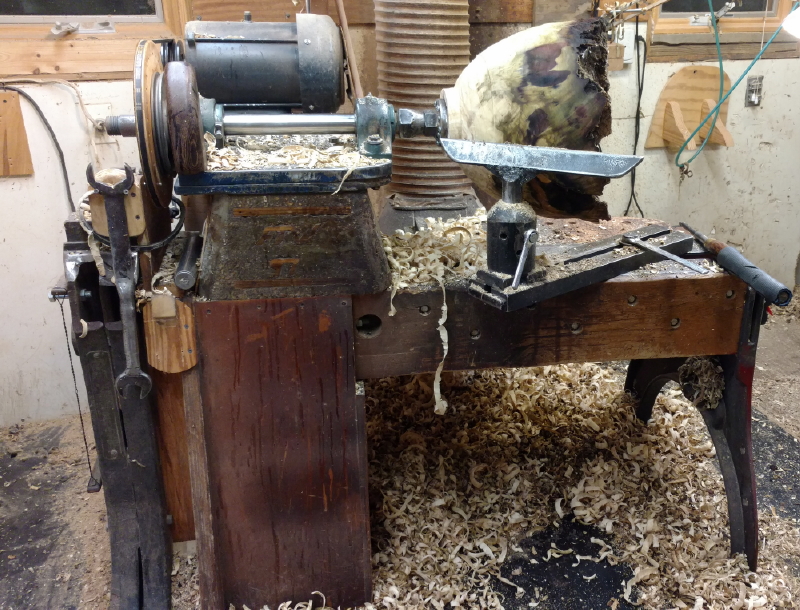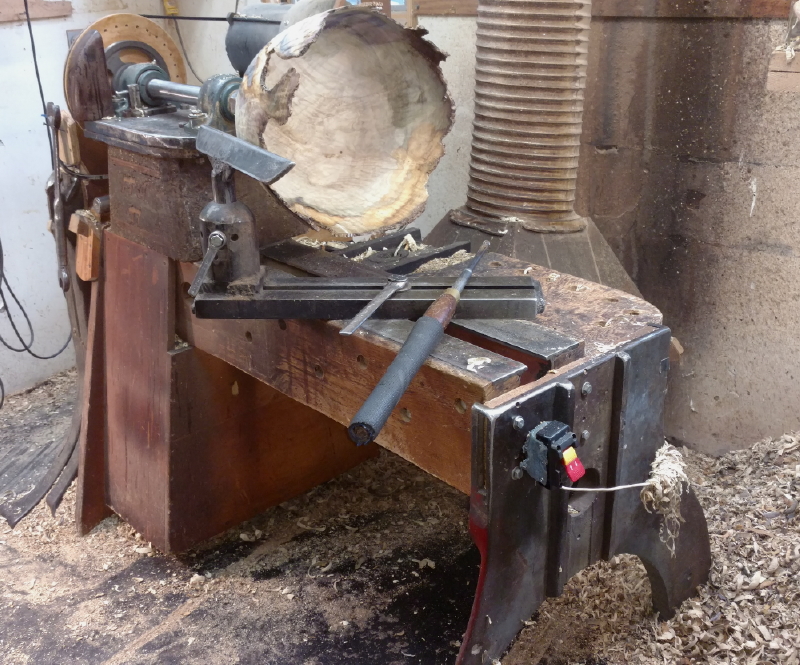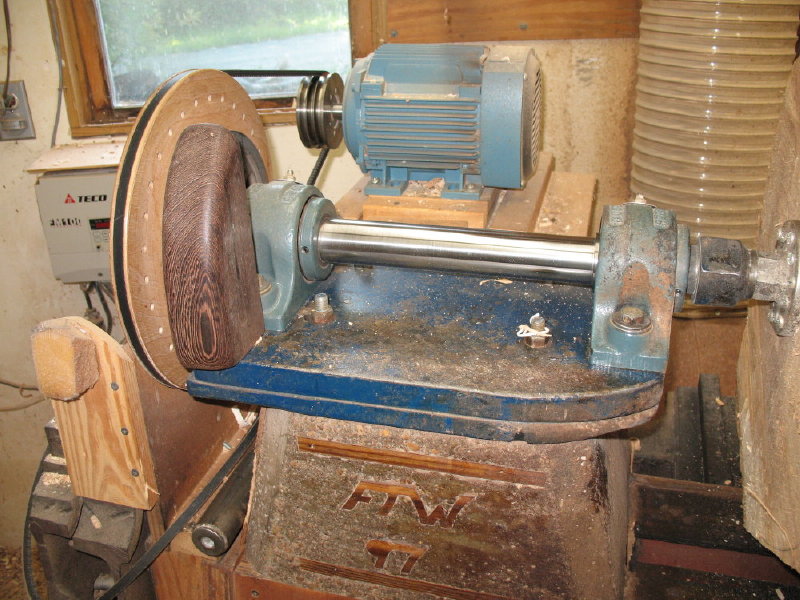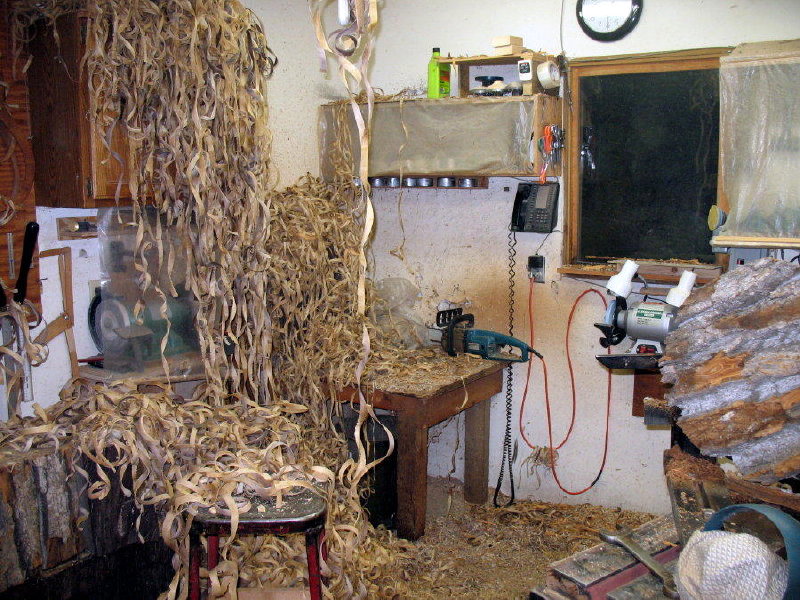I work on a homemade lathe that
I have continually modified over the years. It carries a lot
of mass now, to resist vibration and oscillation under out-of-balance turning.

Here is a general view of the lathe. The bolt holes
along the side attach the metal ways I added to the wood bed.
The motor inverter is inside a box below the motor to protect it
from the shavings. But the dust still gets to it.
Here is a close up of the headstock, showing the
cast concrete headstock block
and the 4" by 8" wooden ways. The steel plates under the pillow block bearings add more
mass. It's a 1 11/16" shaft with 1 1/2"; by 8 tpi threads on the end. An adaptor reduces to 1"; threads for the
4" dia. faceplates I use most. The tool rest post is 1 1/2". An AC variable speed motor (1800 rpm max, and a great
improvement over the DC motor I had) drives a 4" pulley. There's an 8" pulley on the lathe shaft, to which I bolted
a 3/4" plywood disk and turned a 12" pulley, for the slow speeds I use most. I cast my initials and
the date into the concrete. The motor AC drive inverter hangs on the wall behind and to the left.
I got the matched motor and inverter through
www.dealerselectric.com.
I have the Westinghouse TECO inverter. I use a 2 HP
motor driven by a 3 HP inverter, so the power drive never gets
overloaded, but I can bog the motor down in a tool jam, which is a
safety feature. A big cut may be made with a 2 HP motor, but a
1 1/2 HP will slow down too much. This shot is of an older
motor and its inverter you see on the wall behind.

This view from above and from the end shows the magnetically
mounted remote on/off switch on the end, and a better view of the metal ways. The end piece plus
the two on the other end of the lathe came from an ancient square-head planer. In addition, the plywood box
under the headstock is filled with sand. Without all this mass and the wide stance the lathe would rock starting on an
irregular blank.

This is a closeup of the metal ways I installed, and the captured
wrenches that tighten the banjo and the tool rest.
This makes for a very secure system. A torch heated the
wrenches to straighten them for clearance.
When the wood is damp and clear enough, the shavings come
peeling off. I will generate a big cartload every two bowls or so. A 100 pound blank becomes a 2 pound bowl.

